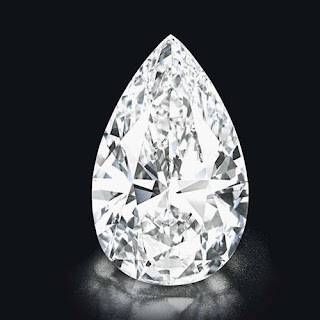Pear Diamonds

The modified brilliant-cut pear shaped diamond is a combination of a round and a marquise shape, with a tapered point on one end. The diamond is always worn with the narrow end pointing toward the hand of the wearer. Like marquise and oval cuts, the pear shaped diamond comes in a variety of slim to wide cuts, and has the added benefit of making the wearer's fingers appear longer and slimmer. Ideally, a pear shaped diamond should possess excellent or very good symmetry. The point should line up with the apex of the rounded end. The shoulders and wings (the upper and lower curves on the right and left side of the diamond) should form uniform, symmetrical curves, with no straight edges. The rounded top should not appear narrow or squat, but like a semi-circle. In a misguided effort to add weight to a diamond (by incorporating more of the rough stone in the final cut) cutters may give the diamond added girth near the point or top, giving the diamond a squared off ...
